This week’s video, courtesy of VASAviation, is a brief and bright example of how things are not supposed to work, but sometimes do anyway. The setup is at Austin-Bergstrom airport early Saturday morning (Feb. 4) in weather that was just barely flyable. The visibility was an eighth of a mile in freezing fog; what pilots and controllers call “RVR weather.” They don’t get a lot of that in Texas, but enough that Austin has CAT III capability.
As depicted in the video, a Southwest Airlines 737 was departing for Cancun from runway 18L. A FedEx 767 was on approach to the same runway and when he issued Southwest’s takeoff clearance, the controller informed the crew that FedEx was three miles out. It was, in fact, quite a bit closer. It being low weather, Southwest took its time getting lined up on the runway. Between the takeoff clearance and the 737 rolling, about 63 seconds elapsed. In that amount of time, the FedEx freighter, at 140 knots, covered about 2.3 miles, meaning at best, it was a half mile from the threshold—about 13 seconds out by a back-of-the-envelope estimate.
Perhaps sensing that the controller had shot too tight a gap, the FedEx pilots first asked if they were cleared to land and, a bit later, urgently, commanded the Southwest aircraft to abort its takeoff roll. Too late. Either the Southwest crew didn’t hear the command, didn’t understand it or were past V1 and unable to abort. The incident investigation will shed light on that.
That this wasn’t a major accident with substantial loss of life may have turned on pure luck—the luck of having pilots in the FedEx cockpit with superb situational awareness. And not everyone has that, at least not all the time. We await the CVR from the FedEx flight, if it becomes available. But consider what had to happen. First, the FedEx pilots had to understand that the tower controller’s plan was too tight, remind him that, “hey, you know we’re out here, right?” and then realize as they committed to the missed approach, they risked spearing the Southwest 737 as it got airborne and began the climb out, thus the urgent command for it to abort its takeoff run.
It’s not supposed to work this way, obviously. ATC is on the hook for separation and that it’s guaranteed means that pilots aren’t supposed to have to worry about it. After all, if they’re in the clag and even though they can see traffic around them on ADS-B, at least in a rudimentary way, there’s no expectation that they should fly their own vectors or ask other airplanes to do so. In this case, fate had a couple of pilots with an exceptional ability to stay engaged and see the flick from the cockpit.
Judging from the tape, the controller, on the other hand, may have had no flick at all. In the moment, it didn’t seem clear to him that FedEx had ordered the abort or that it hadn’t occurred. It may also not have occurred to the controller that in RVR weather, a three-mile gap isn’t close to being enough. At the end of the tape, the FedEx pilots get thanked for their professionalism—faint praise is better than no praise at all. Meanwhile, I suspect there are some passengers sipping Bloody Marias on the beach in Cancun who have no clue how close they came to an outcome we would all rather not think about.


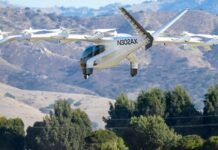
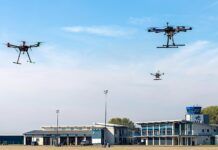

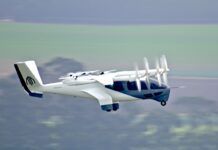
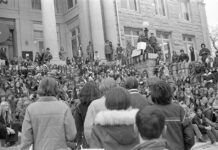


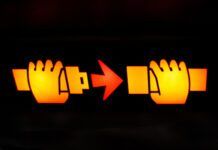
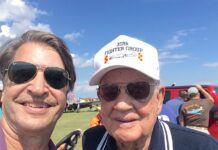
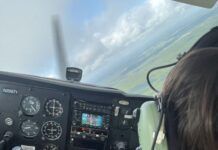


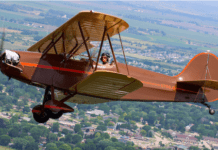
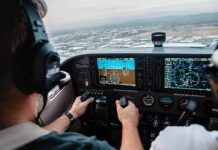

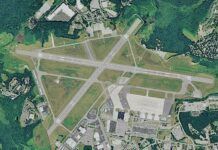
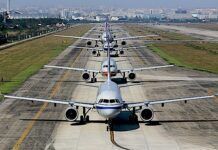
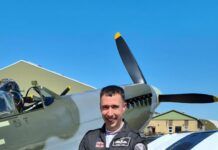



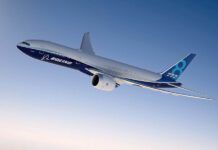



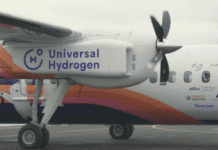







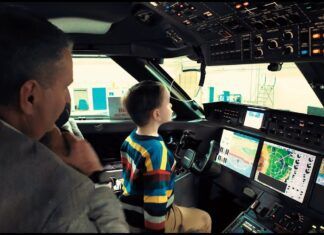
As Achmed would say, “Holy Crap!!!”
Nicely put, Paul. As usual!
As a retired tower operator, NO WAY would I clear a departing air carrier for takeoff that was not already on the runway, with an air carrier on 3 mile final in IFR weather, And if the departing plane already on the runway was not a jet, 3 mile final is too close in low IFR weather.
Sorry, Paul. I watched the video, then made my comment before reading your article. I wish i could just delete my last sentence.
Yikes!
But this was kind of common in Miami when I worked there as a tech out of the office on 36th street in the glass house. Pilots would do a side step right and over fly our building.
I’ve been told in VFR conditions, “XXX Airline, company traffic inside three miles, cleared for an immediate takeoff runway XX”. In the past I’ve replied, “Airline XXX, we’re in no hurry, we’re going to hold short runway XX”.
Sometimes gets an eye roll from my FO, but never a complaint from the tower. Always (so far), a polite and professional “OK Airline XXX, hold short runway XX”.
I’m quite aware I don’t “have the big picture” between Local Approach and Center, but the old adage is “no controller ever died falling out of his chair” was taught to me early.
The only thing I hate more than being cleared for take-off with traffic on short final is being the traffic on short final trying to figure out if the preceding aircraft is on the roll and wheels up off the runway.
That three mile clearance for takeoff stuff needs to go. Pilot math tells me on a three degree approach the landing traffic is already below 1,000′, and is as agitated as the crew being “cleared for an immediate” is.
If I’m flying with an FO I’m not familiar with I discuss/instruct them to keep the automation engaged/coupled (autopilot/autothrust) until we are absolutely certain the runway is clear, many times very close to 200AGL.
I know how the aircraft behaves during an automated go-around ( but chances are pretty good with all the low time pilots flooding the flight deck these days, I have to assume my FO’s are not familiar with the back pressure and pitch attitude required during low altitude go-arounds.
Practicing manual go-arounds in the Sim is great, but screw it up and nobody gets hurt (except their feelings).
Besides, what’s the hurry to get to a congested destination and wait 20 minutes in the penalty box for a gate to open up?
I don’t know the US controllers handbook, but in the South and Latin American countries I frequent, you will NOT receive a landing clearance unless the preceding aircraft has wheels off the runway.
In my forever to be unheard opinion, it would behoove the US regulators to take a page from that book.
As a pilot, I was never even told about the JO 7110.65 (now Rev Z). In a job as a pseudo dispatcher, I first learned about it.
In this evolution and using JO 7110.65Z, I’m astounded to find that Chaper 3 Section 9 — Departure Procedures and Separation — and Section 10 — Arrival Procedures and Separation — don’t really highlight any info that clearly fits this scenario. 3-10-3 — Same Runway Separation — does say that Separation of Cat III aircraft requires 6,000 ft. Elsewhere, it sorta says that the departing airplane should have crossed the departure end before the arriving airplane is over the threshold but that isn’t 100% clear to me. It seems more in tune with successive departures.
As already stated, staying ahead of the situation — in this case by FedEx — was what saved the day.
It seems to me the controller forgot about that and was operating as if in typical VFR weather.
Certainly I’d expect to hear “no delay” with a jet on three mile final. Taking over a minute to roll seems excessive in any case.
With RVRs as low as they were (12,6,14), there should have been use of the ILS critical area boundary and hold line in effect. With weather below 800 and 2, landing traffic, particularly those on a CAT III approach, are supposed to be protected from localizer and GS interference. Also, if the SW 737 is holding short and would look at his TCAS display, he could see the distance and altitude difference from his ship and realize this wasn’t going to work.
Nooch
What he or she said above – in low vis conditions, putting the departing Southwest jet on the runway in front of the FedEx on the Cat III approach only a few short miles away is where this situation went all to crap. The ILS critical area exists for a reason. Paul neglected to mention that, along with thanking them for their professionalism, the tower controller also apologized to the FedEx crew. Which certainly seems in order.
The ILS exclusion area for 18L at KAUS is on the east side of the runway. Southwest was on the west side. you will see just how long SW took to get moving after they were cleared for takeoff. Granted, the controller did not mention the landing traffic on a “three mile final” until AFTER FedEx confirmed they were cleared to land, but the SW crew obviously took a lot longer to depart than what the controller had planned.
My error. SW was issued the traffic as part of their takeoff clearance.
The runway is localizer critical…
https://www.faa.gov/regulations_policies/orders_notices/index.cfm/go/document.current/documentnumber/7110.65
“3−7−5. PRECISION APPROACH CRITICAL AREA a. Aircraft and vehicle access to the ILS critical area must be controlled to ensure the integrity of ILS course signals whenever the official weather observation is a ceiling of less than 800 feet or visibility less than 2 miles. Unless the arriving aircraft has reported the runway in sight or is circling to land to another runway, do not authorize vehicles/aircraft to operate in or over the critical area, except as specified in subparagraph a1, whenever an arriving aircraft is inside the ILS outer marker (OM) or the fix used in lieu of the OM. PHRASEOLOGY− HOLD SHORT OF (runway) ILS CRITICAL AREA. ”
break, a1 is preceded by the word, “except”
except: (1) A preceding arriving aircraft on the same or another runway that passes over or through the area while landing or exiting the runway.
Edit to add- a1 does not allow a takeoff, long table, spotlight, no coffee cup or chair.
It seems to me the controller forgot about that and was operating as if in typical VFR weather.
Take a look at a satellite view of this coord. It is where the glideslope antenna for 18L at KAUS is installed. 30.2005275, -97.6565410 Opposite side of the runway from where the SW aircraft was taxiing.
S.V., None of what you say really matters about the position of the glideslope antenna or that the ILS “exclusion” area is on the east side of the runway — the departing Southwest jet was positioned at the approach end of runway 18L which, according to the FAA, puts them right in the ILS critical area. They should not have been there whilst the incoming FedEx jet was on the Cat III approach. The tower controller should have never cleared Southwest for take off under those conditions.
No ASDE-X at AUS, Paul.
Thanks.
There was definitely room to get SWA out ahead of FDX. SWA is famous for rolling takeoff – they start their takeoff roll from the hold short line and get airborne quickly. Tower exchanged traffic and they both acknowledged. FDX screwed up by using the word abort when they were on final. That made the local controller think SWA aborted – and local gave SWA runway exiting instructions. FDX said ‘southwest abort’ – nothing more or less and did not use their callsign. Everyone shares some blame, but most of the blame goes to FDX. The moment local heard abort on frequency, they should have sent FDX around.
Why FEDEX, or for that matter SWA. It’s been stated that FEDEX was in the process of going around when they broke out and saw SWA rolling for takeoff, and transmitted to SWA to abort as they feared they’d collide with SWA entering IMC at 200’ AGL. No this one will be on ATC.
Correct. Separation was already breeched. FDX was reacting to a potential conflict.
SWA called the twr stating they were ready for t/o which is an unnecessary call as per the ole A.I.M. adage that turbojets are deemed ready when they reach the hold short area for the active rwy.
The SWA call primed the controller, who very much lost his SA, to hasten the SWA t/o clearance.
Will be a fascinating HF study.
@Kevin: Wrong you are sir. FedEx needed assurance that SWA would not climb up into them during the Go-Around.
@John: You presume a lot when you believe you know what is inside ATCs head.
“Dot” (anonymous) is correct that the “critical area” was compromised…likely BOTH by SWA and ATC… as it would be impossible for the SWA to taxi onto the runway without passing-thru that area (if indeed SWA weren’t already in violation.)
Even on VFR days ATC would normally have instructed SWA to “expedite or hold short”…but this was not done either.
Lastly, aircraft-separation was FURTHER compromised by ATC issuing left-climbing-turns to both aircraft. SWA should have been instructed to climb “straight ahead” while FedEx should have been instructed to “turn left Immediately”.
Over 5 decades as a professional pilot I have witnessed SWA receive preferential treatment from ATC, at least TWO events similar to this one threatened MY flight. I believe this is because SWA offers privileges to ATC personnel on SWA flights.
That was my thought as well. Why did ATC command both planes to make a climbing left turn when the main objective was to get them off the same path? To me, telling SWA to fly runway heading would have been the better choice.
Yours “belif”, Mr. George, is based on what? Any proofs, whatsoever, of that sentence? I know You have the right to write what are Yours “believes”, but You also have to present the reasons they create those kind of “senses”.
The glideslope critical area is on the other side of the runway. Departing aircraft can be in the localizer critical area. There was no violation of any critical area here.
Kevin P., you will find that you are incorrect if you do your homework as to what constitutes the ILS critical area.
George H. everything else about this situation aside, you are wrong about the reason for ATC deference to SWA. They do that because SWA, over the decades, has demonstrated the propensity to be able to help THEM out by being ready! And making it work. And complying with the expedites. And generally making THEIR jobs easier. Giving them jumpseat rides for the reason is BALONEY. I’d agree, THIS situation is messed up – and the SWA pilot probably should have said “I’ll wait”, as RVR is just at or above minimums. You can certainly express your ‘belief’, but might reconsider why you have it.
SWA knew about traffic on final and didn’t keep it rolling on takeoff. SWA should have told tower they needed a minute on the runway.
Having heard the uncut audio, I am convinced SW did not know about FedEx until AFTER they were already plodding along on the runway. They were likely still on GND freq right up until they got to the Hold Sort line so they would not have heard FedEx being cleared to land.
The audio I heard, SW was issued the traffic after the RVRs and before Cleared for takeoff. SW rogered the traffic when he reiterated his takeoff clearance.
Listen again, SW specifically says “copy the traffic.”
But copying is not the same as understanding. How many of us would visualize the 3 miles and sense that the gap was too tight? Frankly, I’m not sure I would have.
Indeed they were. My mistake.
Just a reminder that the system of regs & training, as a whole, worked well. Somebody screwed up. Everyone involved was aware of the growing problem. Fedex transmission was to alert the SW pilots, who picked up on the cue, not the controller (who only has a push-to-talk button in his hand, not a stick). SW was agonizingly slow getting on the runway but couldn’t abort once rolling, so they flattened their climb (according to ads-b). Fedex went missed. (The controller probably fainted.)
Any number of things could have happened to avert this issue. SW could have opted to wait for the incoming flight, given the conditions. The controller could have ordered a go-around for fedex as soon as he voiced his concern on final. Fedex could have rejected the landing sooner. SW could have balked & slid off the runway. The permutations are endless.
Experience, training, & continuous situational awareness count. Cool heads & good sticks prevailed. Everybody lived & learned.
“SW was agonizingly slow getting on the runway but couldn’t abort once rolling, so they flattened their climb (according to ads-b). Fedex went missed. (The controller probably fainted.)” “Experience, training, & continuous situational awareness count. Cool heads & good sticks prevailed. Everybody lived & learned.”
Good lesson. Save for Fedex, good conclusion by Dave G.
Reminds me of the near-miss in the fog at PVD in 1999. At least one crew here was paying attention and kept their SA.
As a retired SWA pilot my speculation is that the SWA Captain was late in calling for the FO to start the #2 engine on taxi out and the mandatory two minute warm up time on a B737NG engine had not been completed. On the first flight on the day the recommended warm up time is 5 minutes, but 2 minutes is the minimum. If this were a 737Max the engine warm up time would be 3 minutes. In my speculative scenario, SWA called tower ready for takeoff before they looked down at the clock tracking the time since engine start and then tried to wait out the time before applying takeoff thrust. Otherwise, why would SWA take the 60 seconds they clearly took before starting their takeoff roll. Being slow to start a takeoff roll is very unusual for SWA, unless there was a reason. This is why I speculate their #2 engine had not met it’s minimum 2 minute warm up time. Under my scenario the next question is why did the FO not prompt the Captain to start the engine earlier on taxi out? Probably because either the FO was also situationally unaware of how close they were to the runway or because the Captain had not set the tone for CRM that would have made the FO comfortable in telling the Captain when and how to do his job. This is all speculation but I hope we all learn from others mistakes. A scenario like this is why when I was a Captain I always told my FO’s to speak up if they saw something they did not like, or saw a beautiful woman.
Another SW skipper told me in low weather, they take their time taxiing and getting into position.
Low vis take-offs require a different “approach” compared to getting after it with a a high side load turn to point the nose down the rwy. Prudent to line up on the centerline, making sure engines spool up evenly.
One of the past companies I flew for had a Two heads up procedure for taxiing in below landing mins visibilities (<1800rvr). This meant running any taxi checklists while stopped, not in motion. I still do this on those rare days I have to do a below mins takeoff.
The all-cargo carriers are pushing hard for pilotless UAS aircraft. Makes you wonder how this story would have ended with “no-souls-on-board” the FedEx 767.
“even though they can see traffic around them on ADS-B”
Most air transport aircraft don’t have ADS-B In data for display. Passenger aircraft do have TCAS, but it’s not good enough to tell the difference if an airplane is on a runway or if it’s on the adjacent taxiway. Cargo aircraft are not required to have TCAS, although many of them do.
Quite true. Also ADS-B data does not have the regulatory authority a TCAS RA does. ADS-B data is advisory only, just like the older TCAS I did. Below 1200ft agl, TCAS RA’s are inhibited anyway, as indicated by David B’s next post.
I should also have mentioned above that TCAS alerts are inhibited within 1200′ of the terrain. So in this scenario, it is unlikely that either a TCAS Traffic Alert (awareness) or Resolution Advisory (command) would have been issued to either aircraft even if both were equipped.
The rule is “2 increasing to 3.” The arriving aircraft must be at least two miles from the threshold when the departing aircraft releases brakes and then has separation increasing to 3 miles. This appears to have been violated, but one cannot tell from the video.
Also, recall that these are “white window” operations–the tower cannot see the runway in 1400 RVR. It does appear that the SWA was slow to roll, especially when told there was an aircraft on a 3-mile final–but the controller probably cut it too close when he cleared the SWA for takeoff. I suspect the FedEx saw the runway and the SWA at the same time, so they went around.
In my opinion, the controller should not be permitted to tell a plane to abort. That is total BS. The controller has no idea of decision speed, refusal speed, etc. That’s none of the controller’s business.
Best
Vince Massimini
Kentmorr Airpark MD (3W3)
FedEx told them to abort, not the tower.
i think the term is “cancel takeoff clearance.” Abort is what pilots would say, thus the confusion about who said what. But controllers can do this:
3−9−11. CANCELLATION OF TAKEOFF
CLEARANCE
Cancel a previously issued clearance for takeoff and
inform the pilot of the reason if circumstances
require. Once an aircraft has started takeoff roll,
cancel the takeoff clearance only for the purpose of
safety.
“Reject” is the parlance used most often.
Any actual data yet as to how far the SWA was down the runway when the FedEx crossed the landing threshold?
Moot. Not a legal takeoff clearance per the ATC manual below 800-2.
Having flown heavy formation, 2500-3000′. A fun VMC rejoin technique.
Paul Bertorelli Is The MAN.
To utilize that 1950’s (was it That long ago ?) TV show narrator’s words: “Another job well done by your Treasury Men in Action.”
WOW. Just WOW.
This incident likely stems from (A) SWA pilots’ push to get out/off as rapidly as possible and, (B) ATC being a willing accomplice.
Years ago in LAX (I’m retired) my airline shared a gate adjacent to SW. We had just closed the cabin door, and the jetway was being pulled back. Just as my FO was about to call for pushback clearance the SW flight next to us beat us to the call. My FO called for pushback and Ground told us to standby, Southwest was pushing first. With our jetway back and now able to see the SW flight next door, I stopped my FO from “Rogering”, and called Ground myself, and asked if the SW flight he had just cleared to push was the one with beltloaders up to both bins still loading. The SW FO quickly cancelled their request.
Hehe – good one!
I worked as a controller for 34 years, no need for gap shot with that type of weather, use common sense.
I wonder what YARS would say about AI-controlled Autonomous Flight in this situation.